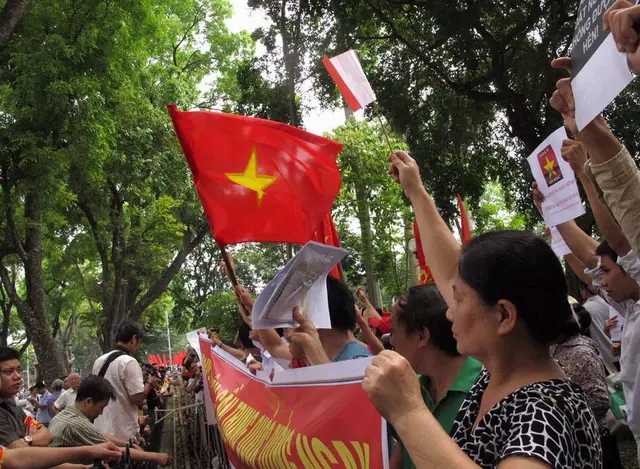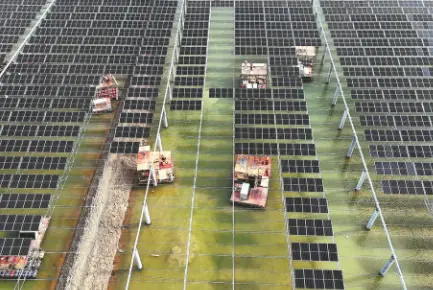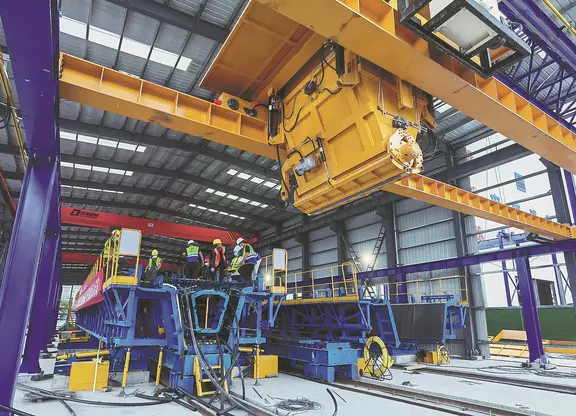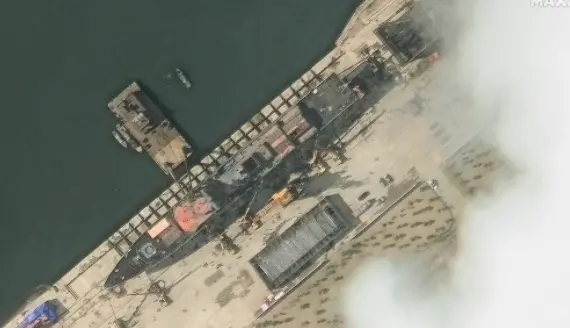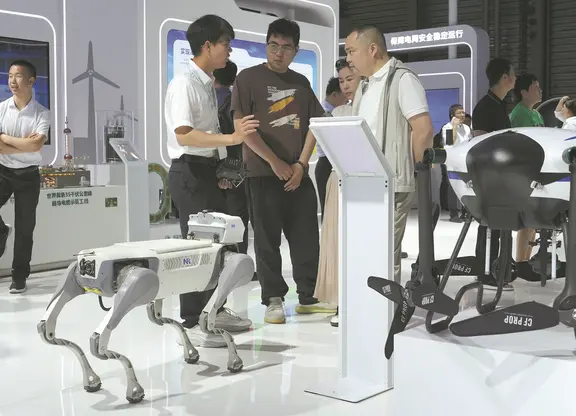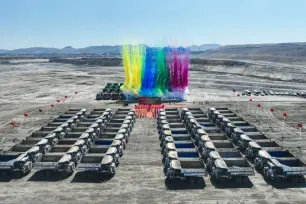France and Britain are only separated by a narrow strait, but when it comes to nuclear cooperation, the two neighbors need the Chinese to build a bridge.
The two European countries have been planning to build two nuclear reactors in Somerset, England, but the agreement was reached only after two Chinese companies decided to join the project with the promise of hefty investment.
The importance of the Chinese participation was highlighted by French Prime Minister Jean-Marc Ayrault, who on Sunday visited Taishan Nuclear Power Plant, a joint venture of Electricite de France (EDF) and China General Nuclear Power Group (CGN), both investors in the British project.
Speaking at the plant located in China's southern province of Guangdong, Ayrault hailed the 30 years of nuclear cooperation between the two countries as a "great cause."
"Our cooperation has entered a new phase. In the future, we will provide better and safer clean energy to people around the globe," Ayrault said.
The French PM's remark echoed the statement made by Chinese Premier Li Keqiang two days ago in Beijing, who said the two governments agreed to expand their cooperation and jointly take advantage of third-party nuclear markets.
Industry observers say the two countries are combining their strength in nuclear technology, market experience, construction and capital, which will profoundly shape the global industry.
Britain is the first developed economy to benefit from the China-France nuclear cooperation.
In October, British Chancellor of the Exchequer George Osborne also visited Taishan, where he oversaw the EDF and the CGN in signing a strategic agreement on their joint investment in Somerset's Hinkley Point C project.
Investors in the 16-billion-pound (26 billion U.S. dollars) program also include the China National Nuclear Corporation (CNNC) and France's Areva. The two Chinese companies will be holding up to 40 percent of total shares, and the CGN is likely to be a major contractor for the project.
The advanced EPR technology at the Taishan plant, currently one of the most mature and stable civil nuclear reactors available, will also be deployed at the Hinkley Point C program, which is the first nuclear power plant Britain has approved since 1995.
Nuclear energy cooperation between China and France dates back to the 1980s, when the two sides decided to build China's first gigawatt-level nuclear power plant at the Daya Bay, about 200 km away from Taishan.
"We were like master and apprentice at that time, with France being the master," He Yu, chairman of the CGN, recalled on Friday at a forum celebrating the two countries' three-decade cooperation.
"Now, we have become strategic partners," He added. "Based on this fruitful cooperation, China has built its own integrated industrial system of nuclear energy."
China has 17 reactors in operation and 28 more under construction, which account for two-fifths of the world's total reactors under construction.
In addition to their prowess in capital investment and construction, Chinese nuclear enterprises have also participated in foreign programs by exporting core parts.
Li Ning, director of the Energy Institute of Xiamen University, believes China, with its rich experience in design, construction and operation of nuclear power plants, has become a major exporter in the civil nuclear sector.
"Britain is the world's oldest civil nuclear giant, while China has the fastest-growing civil nuclear industry," Li said. "The Chinese companies' success in the British market will set a good example for their future exploration of other foreign markets, like Southeast Asia, the Middle East and Africa."
Nuclear diplomacy
Nuclear cooperation has become an issue frequently discussed in recent high-profile meetings between Chinese and foreign leaders. Like "high-speed rail diplomacy," experts say China's nuclear energy sector is also a rising star on the country's diplomatic stage.
During Premier Li Keqiang's visit to Romania in late November, the two sides agreed that the CGN would join the construction of units 3 and 4 of the Cernavoda Nuclear Power Plant in Romania.
U.S. Energy Secretary Ernest Moniz said during his trip to China in October that Chinese companies will supply components to American nuclear power plants in Georgia and South Carolina as part of a bilateral cooperation agreement between the two countries.
"Nuclear power development is a technology- and capital-intensive industry. And considering its sensitivity, no transnational cooperation can go on without political trust," Li Ning said. "So it's not just about business, but also an area of diplomacy."
Diplomacy may also play a part at the company level, as ambitious Chinese companies may find themselves besieged by an increasingly jittery public as they enter other countries.
Nuclear safety has been a thorny issue worldwide after the nuclear meltdown at Japan's Fukushima. Countries such as Germany, Italy and Switzerland have planned to reduce the proportion of nuclear energy in their power consumption or halt their civil nuclear development, despite arguments that the clean energy source can contribute to the world's efforts to cut carbon emissions.
The retreat of foreign rivals may mean more opportunities for Chinese nuclear companies, but it also suggests the extra challenge of responding to public concerns over nuclear safety.
Pu Jilong, former safety director of the CGN, said public concerns have become an inevitable challenge for Chinese nuclear enterprises, which in the future may face requirements to disclose their records on nuclear power plant construction, operation and supervision, and continue to seek safer and more reliable technologies.
 简体中文
简体中文

